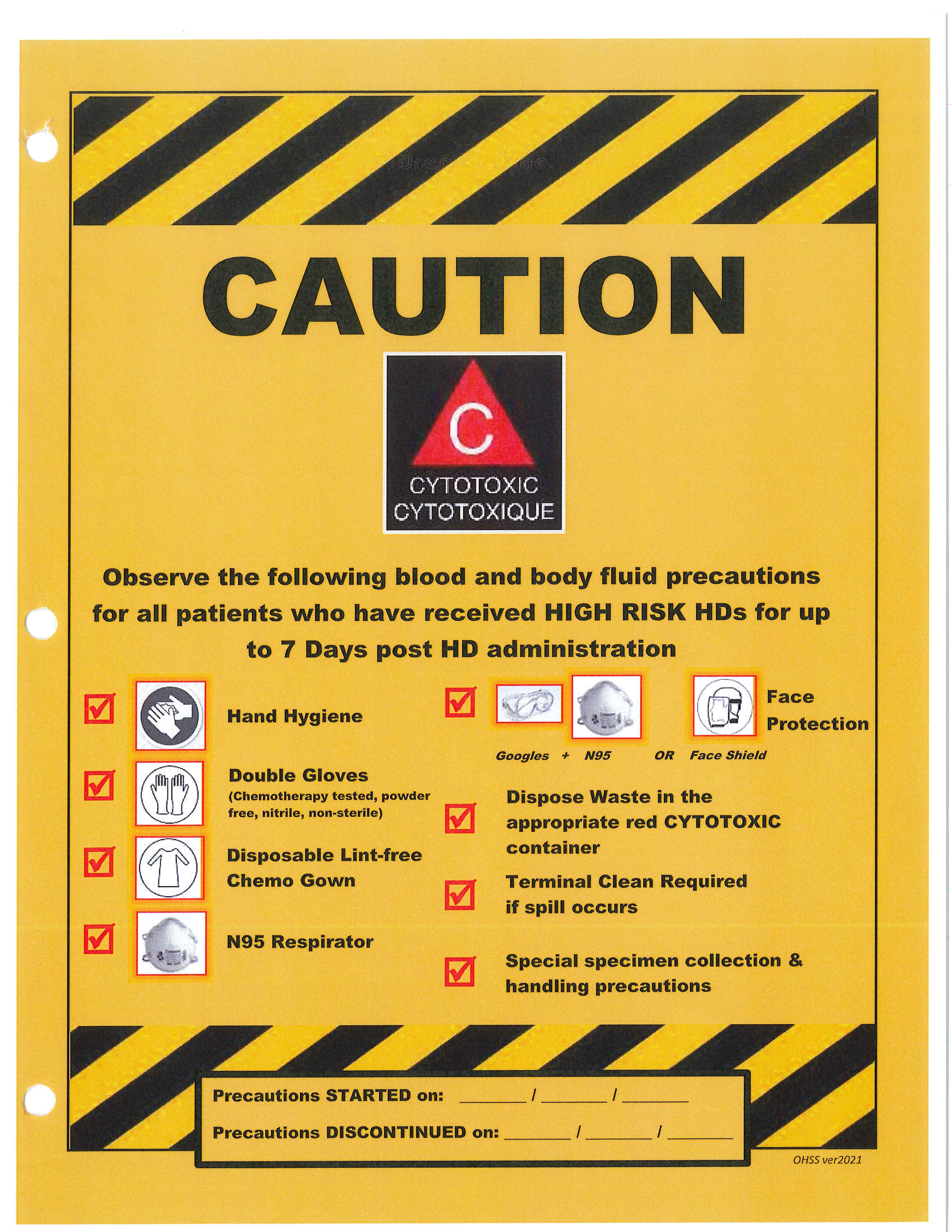Share

I am writing today to bring attention to an alarming finding that has been discovered in several Long-Term Care facilities in Greater Sudbury.
I am a Personal Support worker who has been working in a local facility for 11 years. I am also a member of my JHSC and also the WSIB rep within my Union local. This year I was informed by signage posted on my resident's door that the resident was "Cytotoxic". I didn't immediately understand the severity of this warning and besides the sign there really was nothing else to explain it to me. What this meant was this resident was taking Chemotherapy medication and extra precaution was needed when dealing with this resident and supporting him through his activities of daily life. I took to researching everything I could about Cytotoxins, the precautions needed when dealing with the medication, the people taking them and what to do with the waste generated. I came to find that not only was I never educated within my workplace as to what this hazardous medication can do but was also exposed unknowingly for the entirety of my employment, so was everyone who had come into contact with the medication and the waste generated.
Mine Mill and Smelter Workers’ union, Unifor Local 598 are beginning a large undertaking of educating these facilities as to what they have to provide to staff in regard to PPE, the Ministry of Labour has been informed and has cited all facilities involved due to not providing staff with education and or not having policies in place in regards to Cytotoxic medication at all or what to do in the event of exposure. ALL current and past staff employed by the offending facilities must be notified to be informed they may have been exposed; this is potentially hundreds if not thousands of people within our community filing WSIB exposure claims.
While these medications are life saving for so many, if handled improperly they pose an incredible risk to staff while being administered and afterwards in regard to contact with bodily fluids which is considered Cytotoxic waste for the period of treatment. There is also a grave threat to our environment. I contacted the Ministry of Environment who had initially led me to believe that these facilities throwing Cytotoxic waste into regular garbage was an actionable issue that they could move forward with it. After some digging the MOE officer called me back to say that the facilities had an exemption regarding disposal of hazardous waste. That exemption is criminal, this waste poses a hazard to all living beings, our drinking water and our landfills. Cytotoxins/Antineoplastics are a class of medication used mainly for Chemotherapy but also Rheumatoid Arthritis and MS.
They are Mutagenic meaning a substance that alters the DNA of living beings, increasing the likelihood of a mutation
They are Carcinogenetic meaning a substance that may cause mutations leading to the development of tumors in healthy cells
They a Genotoxic meaning a substance that damages DNA, the damage caused can lead to the growth of malignant tumors
They can cause acute eye, skin and mucous membrane irritations, nausea, headaches, dizziness and hair loss as well as liver disease and various Cancers.
Those at greatest risk are pregnant women, men or women actively trying to conceive, as exposure has been known to cause spontaneous abortion, stillbirth, preterm labour and or temporary or permanent infertility. They have also been shown to cause children that were exposed in Utero to potentially have growth and development abnormalities.
There two provinces that have specific legislation regarding Cytotoxins, B.C (sections 6.42-6.58 of the Occupational Health and safety Regulation) and Saskatchewan (Reg. 471 of the Occupational Health and Safety Regulations) Legislation that proactively helps keep workers educated, protected and informed of the hazards in their workplaces and protects the environment as waste disposal is legislated also.
We need to be protected, there is no reason I can think of as to why in 2022 there still is not adequate legislation regarding a class of substances that has been recognized a hazard since the late 1970s. The staffing demographics of Long-term care facilities are notably made up of women, new immigrant workers and students, a statistically vulnerable group that is often disenfranchised, marginalized and dependent on Unions, governing bodies to police and advocate for their rights.
For further information Contact Tara Fennell
705-673-3661 Ext 202
705-665-2330


